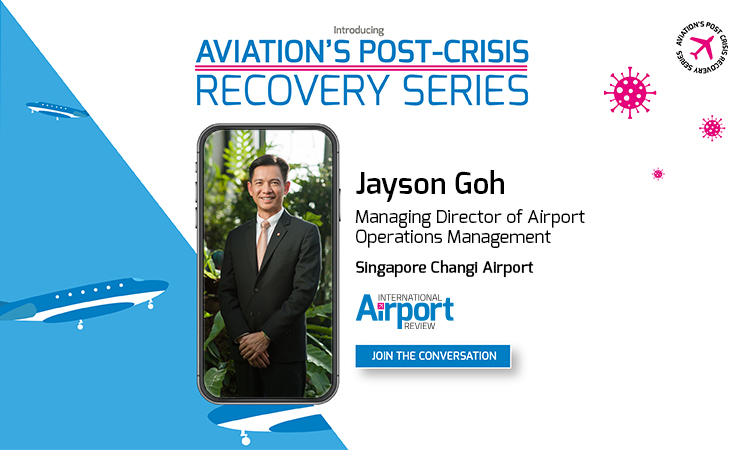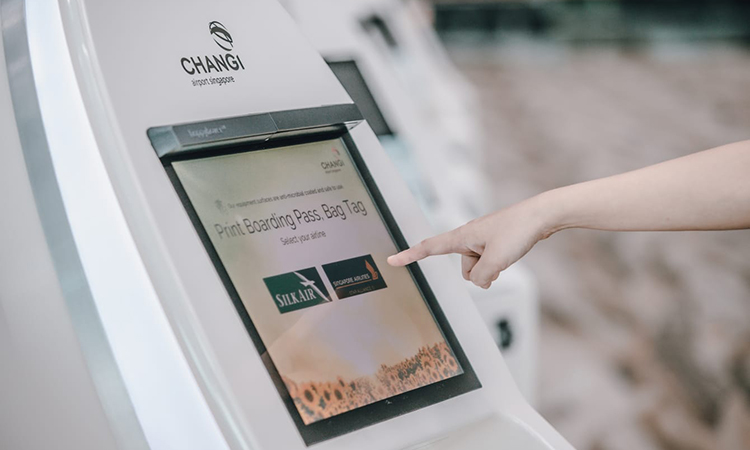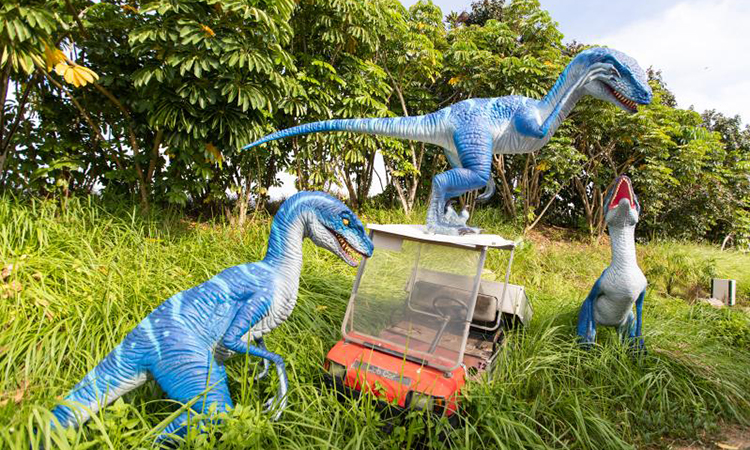Aviation’s Post-Crisis Recovery Series: Singapore Changi Airport
- Like
- Digg
- Del
- Tumblr
- VKontakte
- Buffer
- Love This
- Odnoklassniki
- Meneame
- Blogger
- Amazon
- Yahoo Mail
- Gmail
- AOL
- Newsvine
- HackerNews
- Evernote
- MySpace
- Mail.ru
- Viadeo
- Line
- Comments
- Yummly
- SMS
- Viber
- Telegram
- Subscribe
- Skype
- Facebook Messenger
- Kakao
- LiveJournal
- Yammer
- Edgar
- Fintel
- Mix
- Instapaper
- Copy Link
Posted: 14 May 2021 | Jayson Goh | No comments yet
As part of International Airport Review’s exclusive series, the Managing Director of Airport Operations Management at Singapore Changi Airport, Jayson Goh, explains how having a zero-contact terminal is a key part of several measures which are ensuring the safety of both passengers and airport staff.


The COVID-19 pandemic has been completely unprecedented in its impact on the aviation industry. How has it impacted Changi Airport?
With international border restrictions severely weakening air travel demand due to COVID-19, the number of passenger flights at Singapore Changi Airport (SIN) was drastically reduced in 2020. Prior to the virus outbreak, the outlook for the global aviation industry was bright, and we were fast expanding our terminal handling capacities to meet the projected growth in demand for travel. Unfortunately, with the pandemic hitting the world so hard, our airport’s passenger traffic inevitably dropped, from a record high of 68.3 million in 2019 to 11.8 million in 2020, an 82.7 per cent decline year-on-year.
The decimation of passenger flights also had an adverse impact on cargo bellyhold capacity, which resulted in Changi’s air freight throughput decreasing by 23 per cent year-on-year to 1.54 million tonnes. The cargo capacity crunch was, however, mitigated by Changi Airport Group’s (CAG) efforts to welcome new freighter operators, as well as its close collaboration with airline partners to increase the frequency of cargo flights and cargo-only passenger flights.
What immediate changes did you have to make in response to the pandemic, and what did you find the hardest problem to tackle?
When news of the virus outbreak first became known, the immediate priority for us was to ensure that all visitors to Changi Airport were safe, including airport staff. Precautionary measures such as temperature screening, enhanced cleaning and safe distancing were quickly put in place, and we made it a point to keep Changi’s cleaning standards high.
When news of the virus outbreak first became known, the immediate priority for us was to ensure that all visitors to Changi Airport were safe, including airport staff”
With fewer travellers, as well as fewer meeters and greeters, footfall at our retail shops was also badly affected. We worked closely with our tenants and supported them on various fronts, including rental rebates and reduction in operating hours. As the situation prolonged, we stayed in close discussion with the concessionaires and worked with government agencies to extend assistance packages to them.
We also worked with our airport partners to identify retraining and redeployment opportunities for their staff, so as to protect as many jobs as possible during the downturn.
As an operator of an important air hub, we had to ensure that Changi Airport remains open and operates sustainably. When it became apparent that it will take a while for air travel to resume to pre-COVID-19 levels, we consolidated our terminal operations at Changi Airport with the suspension of operations at two of our terminals. This has enabled CAG and its airport partners to save on running costs, such as utilities and cleaning, as well as to optimise resources across the airport’s terminals to better match the lower passenger traffic and airline flight operations.


Credit: Changi Airport Group – New contactless and cleaning innovations, such as the proximity touch screens, will enhance the health and safety for travellers.
What initiatives are you focusing on during 2021 to rebuild passenger confidence?
At Changi Airport, safeguarding the health of airport workers, passengers and visitors remains our utmost priority. We have implemented safety measures such as: temperature screening at key points; safe distancing; use of masks by all passengers and staff; increased cleaning and disinfecting; widespread introduction of sensor-activated ‘auto’ hand sanitisers; and the use of a long-lasting antimicrobial spray on frequently touched surfaces for added protection against pathogens. Robots are also deployed throughout Changi Airport to clean and disinfect floors and carpets daily.
Today, we are a zero-contact terminal, where passengers can move through the whole process of check-in to boarding a plane without touching a single surface”
Today, we are a zero-contact terminal, where passengers can move through the whole process of check-in to boarding a plane without touching a single surface. We will continue to explore automation and innovations – such as the usage of robotics and contactless technology and the digitisation of services – to provide an enhanced level of service to customers and improve work productivity.
We have also set up dedicated COVID-19 testing stations at our terminals. Our testing facilities are being enhanced as we work alongside the government and our airport partners to support the implementation of travel lane arrangements as Singapore gradually reopens its air borders to welcome back more visitors.
Since the opening of the Changi Vaccination Centre at Terminal 4 in January 2021, more than 80 per cent of the aviation community have been vaccinated, helping to ensure that Changi Airport is a safe air hub for all.
What other exciting projects/developments are in the pipeline at Changi Airport to help cope with increased passenger numbers once air travel begins to pick-up again?
Expansion and renovation work at Terminal 2 (T2) are underway. In fact, the suspension of operations at T2 has allowed renovation works to be accelerated. When completed, this will increase T2’s handling capacity by five million passengers per annum (mppa) to 28 mppa and will replace facilities and amenities which are nearing the end of their shelf lives. The refreshed T2 will sport even more greenery and natural elements at every turn, in keeping with Changi’s signature garden theme in its terminals.
There will also be space added in the Departure and Arrival Halls, giving more room to airport operations such as check-in and immigration clearance. Passenger touchpoints will be enhanced for a smoother and more seamless experience.
To safely accommodate the increase of passenger volume with the safe distancing measures in place as travel resumes, there will also be improvements to terminal facilities and services”
Additional retail and F&B outlets will be introduced in both the public and transit areas of the terminal, providing passengers and visitors with wider and refreshed options. A duplex F&B concept will be introduced at the north end of T2’s landside, leading to Jewel Changi Airport, to provide visitors with a fresh dining experience while transforming this gateway to Jewel.
To safely accommodate the increase of passenger volume with the safe distancing measures in place as travel resumes, there will also be improvements to terminal facilities and services. These include installing air ionisers in areas with high passenger congregation, such as gatehold rooms. There are also plans to extend the digital security queue option to more flights, allowing passengers to book slots for security checks before entering the gatehold room.
Besides these terminal improvement works, Changi Airport continues to enhance the Changi experience by strengthening its appeal as a tourism destination. We are working with stakeholders in the eastern part of Singapore, which we call the Changi Precinct, to showcase key attractions and experiences. This is part of Changi Airport’s joint efforts with the Singapore Tourism Board to develop the area into an attractive tourism precinct.
The Changi Precinct includes the newly opened Changi Airport Connector and Jurassic Mile. The Changi Airport Connector is a 3.5km cycling and jogging path that links Changi Airport to the East Coast Park and the Park Connector Network. For the first time, visitors and the airport community can cycle or jog to Changi Airport, with convenient access onwards to Jewel Changi Airport and the terminals.
Jurassic Mile is Singapore’s newest and largest permanent outdoor display of life-sized dinosaurs. More than 30 different pre-historic creatures are displayed along the one-kilometre cycling and jogging path. From a towering Tyrannosaurus Rex to gigantic dinosaur eggs, visitors will be wowed by the lifelike dinosaur exhibits at the Changi Jurassic Mile, making it a perfect outdoor weekend destination for families and tourists.
When air travel recovers, these new attractions offer more options for travellers to explore Singapore’s city area and eastern precincts.


Credit: Changi Airport Group – Changi Airport’s Jurassic Mile.
Are there any initiatives that you have implemented during the COVID-19 pandemic that you will permanently integrate into your airport’s strategy, even once the crisis has passed?
In order to emerge stronger from COVID-19, we put emphasis on ensuring that we seize the opportunity to innovate for business sustainability and the future of travel.
In order to emerge stronger from COVID-19, we put emphasis on ensuring that we seize the opportunity to innovate for business sustainability and the future of travel”
One of the things that we looked at was how to convert surfaces with high touchpoints to non-touch surfaces. Automated check-in kiosks and bag-drop machines fitted with proximity sensors remove the need for travellers to touch the electronic screens. Auto-clearance immigration lanes upgraded with a new biometric system that uses face and iris recognition technology replace the need for traditional fingerprint-scanning. Trials are also underway to use infrared technology for passenger lifts, in which travellers just need to hover their finger over the lift button to activate it.
A similar spirit of reinvention is applied to all areas of our business. When travel revives, we are determined to provide a safe and memorable experience for our passengers travelling through Changi Airport.
What business activity are you forecasting for Changi Airport/ what is your business outlook?
It could take some time for air travel to return to pre-COVID-19 levels, depending on how soon the virus situation can be brought under control around the world and for border restrictions to be relaxed. The successful development and global distribution of vaccines in recent months has brought hope for a sustainable solution to manage the outbreak, and this will definitely help to jump-start travel recovery around the world.
Humans have always had an insatiable demand to fly and for lives to be connected. Aviation’s raison d’etre will never go away”
Humans have always had an insatiable demand to fly and for lives to be connected. Aviation’s raison d’etre will never go away. The industry’s role of connecting lives, linking cargo flights and transporting medical supplies are even more important during this period. For these reasons, we firmly believe that the long-term prospects for air travel remains positive.
The aviation industry has overcome many crises before, such as SARS and the global financial crisis. While we are currently going through the trough of this pandemic, once we get over the dark cloud that is hanging over us, we are confident that the industry will prevail and emerge stronger than before.
When the world is ready to travel, Singapore will still be well-poised as an attractive business capital and tourism destination, with rejuvenated tourism offerings that are adapted and relevant to the needs of travellers in a post-COVID-19 era. At Changi Airport, we will continue to play an integral role in driving the recovery of Singapore’s aviation industry that further supports the resilience of the economy.
Jayson Goh currently serves as Managing Director of Airport Operations Management at Singapore Changi Airport, overseeing both the passenger experience and development operations divisions, as well as the experience creation, horticulture and facility management departments. Goh is also a member of Changi Airport Group’s Innovation Committee, which drives mid- to long-term initiatives to future proof the airport.
A keen champion for service innovation, Goh leads the effort in rethinking passenger processes at the airport, driving new initiatives that include automation, robotics and the development of intelligent solutions using data analytics.
Related topics
Aeronautical revenue, Air freight and cargo, Airport construction and design, Airport crisis management, Airside operations, Aviation's Post-Crisis Recovery Series, COVID-19, New technologies, Non-aeronautical revenue, Passenger experience and seamless travel, Passenger volumes, Retail, Safety, Self-service, Terminal operations, Workforce


















